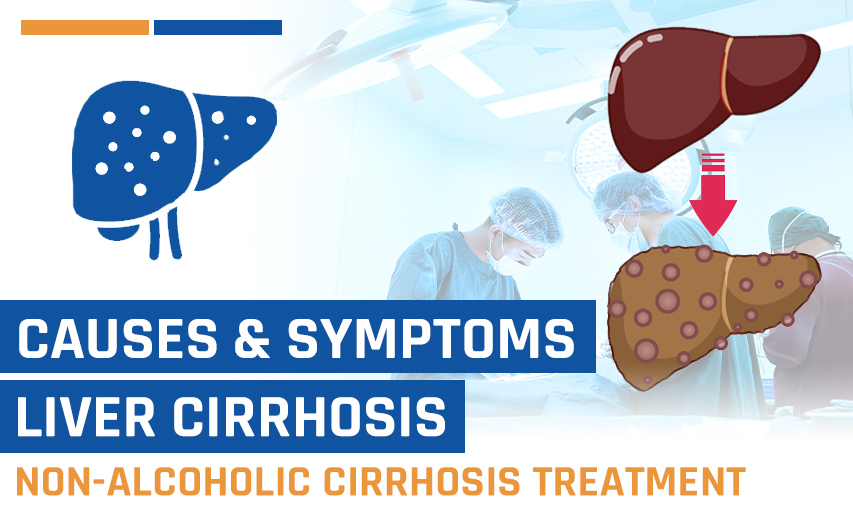What are the Different Brain Aneurysm Sizes That Require Surgery?
Brain aneurysms are silent threats that oftentimes remain unnoticed until they become a serious medical emergency. One of the most important factors in identifying an aneurysm and determining whether an aneurysm requires surgery is its size. But what exactly are the size thresholds that trigger surgical intervention? And why are more and more patients around the world choosing India for this life-saving procedure?
Brain aneurysms are abnormal bulges or balloon-like structures that form in the brain's blood vessels, and brain aneurysm size plays a crucial role in determining the treatment plan. While small aneurysms may not require immediate surgical intervention, larger ones carry a significantly higher risk of rupture, making surgery often the only viable option to prevent deadly brain aneurysm consequences.
In this blog, we’ll explore the relationship between aneurysm size and rupture risk, explain when surgery becomes necessary, and highlight why India has become a leading place for advanced, affordable, and high-success-rate brain aneurysm treatments. With advanced medical technology, internationally accredited hospitals, and expert brain aneurysm specialists, India offers not just care but confidence. India boasts of an impressive success rate of 95% in brain aneurysm surgery, becoming a preferred choice for patients seeking advanced and reliable treatment options.
How are Brain Aneurysms Classified by Size?
When it comes to brain aneurysms, size matters—a lot. Aneurysms are typically categorised by their size, shape, and location, and understanding these classifications helps determine the right course of treatment. Brain aneurysm sizes are measured in millimetres and are classified based on their size, shape, and location. Understanding the different brain aneurysm sizes and their characteristics can help patients and doctors make informed decisions about treatment options.
■ Small Aneurysms (Less than 5 mm)
Small aneurysms are typically smaller than 5mm in size and are also known as "berry" aneurysms. They usually have a narrow neck and a small dome and pose a lower risk. Brain aneurysm sizes that are small tend to remain asymptomatic and may not require any form of surgery or treatment. That being said, certain lifestyle factors might increase the likelihood of them rupturing and, hence, should be monitored with regular imaging studies to check for growth or rupture.
Small aneurysms are more common in women than men. They are often found incidentally during imaging studies for other conditions. Most medical professionals advise people with small aneurysms to come in frequently for regular check-ups and imaging to prevent any progression of the aneurysms.
■ Medium Aneurysms (5-10 mm)
Medium aneurysms tend to be between 5 mm and 15 mm in size and have a moderate-sized dome and a slightly wider neck. If your brain aneurysm size is medium, you might face brain aneurysm symptoms such as headaches, seizures, or vision problems. They have a much higher risk of rupture compared to small aneurysms, and surgical intervention may be recommended to prevent rupture.
There are a few treatment options for medium aneurysms, such as cerebral aneurysm clipping, coiling, or flow diversion. These aneurysms are more common in adults than children and are often caused by a combination of genetic and environmental factors. Since they need urgent medical attention, patients with medium aneurysms are advised to participate in minimally invasive procedures for their management.
■ Large Aneurysms (10-20 mm)
Large aneurysms are typically between 15 and 25mm in size and have a large dome and a wide neck, so they are prone to rupture. If you have a brain aneurysm size that is large, you should treat it as soon as possible. Large aneurysms often cause significant symptoms such as severe headaches, nausea, and vomiting. If these symptoms persist, you should go for treatment options like cerebral aneurysm clipping, coiling, or flow diversion. Large aneurysms need immediate surgical intervention to prevent rupture and relieve symptoms by stopping them from escalating. Large aneurysms are more likely to be seen in adults than children. The causes of brain aneurysms that are larger in size include a combination of genetic and environmental factors.
■ Giant Aneurysms (Greater than 20 mm)
Giant aneurysms are bigger than 25 mm in size, and they pose the highest risk for long-term complications. They can lead to massive domes and an expansive neck. It is advisable not to ignore the symptoms of brain aneurysms that exceed 25 mm, as they can often lead to severe symptoms such as stroke, seizures, or vision loss.
Giant aneurysms are complex to treat, and treatment options are limited for them. Surgical intervention for them is very complex and high-risk. Most medical experts encourage people with giant aneurysms to undergo procedures such as flow diversion or bypass. Giant aneurysms are more common in adults than children and are more likely to form from a combination of genetic and environmental factors.
What Are the Different Options for Brain Aneurysm Treatment in India?
Brain aneurysm treatment has advanced significantly over the past few decades, and India stands as a top option offering world-class neurosurgical care. But what exactly are the treatment options available?
1. Endovascular Coiling
Endovascular coiling is a minimally invasive procedure used to treat brain aneurysms from within the blood vessel. A catheter is inserted through the groin and guided to the aneurysm. Tiny platinum coils are then released into the aneurysm sac to block blood flow and prevent rupture. It is minimally invasive with a shorter recovery time and ideal for patients unfit for open surgery.
2. Surgical Clipping
Surgical cerebral aneurysm clipping involves a craniotomy to place a metal clip at the base of the aneurysm, cutting off blood supply and preventing rupture. It’s a traditional but highly effective brain aneurysm treatment technique. It is preferable for younger patients or in cases where coiling is not a feasible option.
3. Flow Diverter Stents
Flow diversion is an advanced technique used for treating complex or large and giant aneurysms. A stent-like device is placed in the artery to divert blood flow away from the aneurysm and promote clotting and vessel healing. It is a minimally invasive procedure ideal for treating wide-neck or fusiform aneurysms for patients who are not suitable for clipping or coiling.
4. Pipeline Embolisation Device
Similar to flow diverters, the Pipeline Embolisation Device is used for large and giant aneurysms that are hard to treat with coils or clips. It’s a flexible stent that redirects blood flow and promotes healing of the artery. It is designed specifically for large and complex aneurysms.
5. Bypass Surgery
In rare and complex cases where standard treatment options aren't feasible, surgeons might suggest a bypass procedure to reroute blood flow away from the aneurysm. This procedure is tailored for extremely difficult or ruptured aneurysms and requires high surgical expertise.
Why Should You Get Brain Aneurysm Treatment in India?
When it comes to brain aneurysm treatment, choosing the right country can make a significant difference, not just in terms of cost but also the quality of care, medical technology, and recovery outcomes. India has come out as one of the best countries for getting neurosurgical treatment, attracting thousands of international patients every year for brain aneurysm treatment. But what exactly makes India such a preferred choice?
1. Best Quality Neurological Care
India is home to highly qualified neurosurgeons and interventional neurologists who are internationally trained and experienced in handling complex brain aneurysm cases. Doctors with CureIndia have practised or trained in top medical institutions in the U.S., U.K., and Europe, and they bring global expertise to local care. The surgeons and hospitals in India hold expertise in both minimally invasive procedures and open surgeries with high brain aneurysm survival rates (often over 95%).
2. Advanced Treatment Options
India offers the latest and most effective treatments for brain aneurysms, including Endovascular coiling, Surgical cerebral aneurysm clipping, Flow diverter stents, Pipeline embolization devices and Bypass surgery for all kinds of brain aneurysm sizes.
The hospitals with CureIndia are equipped with the latest and most advanced neuroimaging and robotic surgical technologies for precise and safe treatment procedures.
3. Affordable & Transparent Costs
Compared to countries like the United States, Russia, Georgia, or Belarus, the cost of brain aneurysm treatment in India is 60–80% lower, without compromising on quality. A brain aneurysm coiling procedure that costs $30,000+ in the U.S. can be done for $6,000–$8,000 in India, and a flow diverter which ranges from $20,000 to $25,000 in India can cost double in these countries.
4. Internationally Accredited Hospitals
The neuro hospitals in India are JCI and NABH certified. These accreditations make sure that the hospitals meet global standards in patient safety, care quality, and hygiene.
5. Minimal Waiting Times
Unlike many Western countries where patients face long waitlists for specialist consultations or surgeries, India offers quick access to diagnosis and treatment, often within a matter of days. Faster intervention means better outcomes, especially for time-sensitive cases like brain aneurysms.




















Be First To Comment
Leave a Comment